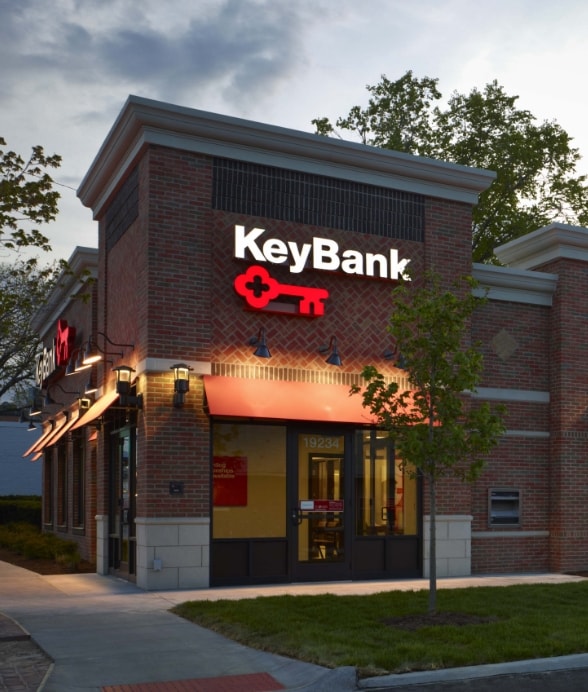SOLUTION
Banking on more efficient business focus and insights
The KeyBank and PwC teams used out-of-the-box thinking to assess where finance is today vs. where it could be in five years. Throughout the transformation, teams continually pushed one another to reimagine how work is done.
KeyBank’s mission is to empower clients, communities and employees to thrive. But to continue thriving itself, the company needed a system that could help it reach business goals. The joint team came up with a two-step process to finance transformation:
Step one: Centralize and rationalize the operating model. Adopt a unified finance data model and common process standards. Digitize what was once done in manual spreadsheets and move to a cloud-based platform, using Workday Financial Management, Workday Adaptive Planning, Workday Prism Analytics and Workday Accounting Center.
Step two: Fully digitize. Adopt a finance-of-the-future operating model with real-time analytics. In the past, if a KeyBank employee wanted to look at a loan portfolio, they would see one large loan balance rather than multiple balances reflecting individual loans and would have to crunch the numbers themselves. KeyBank’s new solution gives employees deeper insights into their loans in seconds, so they can spend more time collaborating on ways to boost business.
Before the transformation, about 85% of the finance team’s time was spent processing transactions, gathering and collating data and completing compliance and reporting activities. Just 15% went to developing business insights, like identifying where a division might be underperforming.
These insights are crucial to keeping the business on track for growth. As they work through subsequent phases of the transformation, KeyBank expects to continue to automate processes and further reduce the time it takes to close its books.
Elevating the workplace experience
KeyBank chose Workday, a PwC Alliance, to underpin its transformation — which included revamping transaction processing, supporting new Federal Reserve reporting requirements and providing on-demand learning resources — because the software can satisfy a seemingly endless variety of demands. It could also flex to the institution’s needs, such as automating data collection and adapting to regulatory changes in real time — all while maintaining a consistent user experience.
Given the enormity of this transformation, PwC and KeyBank upskilled employees through workshops, videos and in-person software testing sessions. These training sessions helped employees think differently about their work, easily adjust to new processes and learn about the time savings the wide-reaching technology solutions offered.
As additional tasks are increasingly automated, KeyBank’s workforce can expect to have even more time and opportunities to think strategically, become more responsive to business needs and develop new ways to invest company dollars. And getting everyone on the same system means each employee can access the same data and quickly get on the same page.
Part of KeyBank’s success can also be attributed to the company's flexibility. It changed its business processes to align to Workday’s platform designed on leading practices — like automating financial consolidation, which reduces overall reporting cycles.












